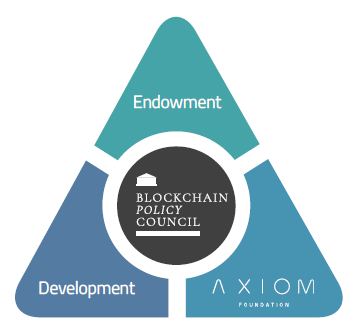ndau is governed in accordance with the ndau monetary policy, the ndau digital governance policy and the ndau principles. The BPC is responsible for implementing the ndau monetary policy. The ndau monetary policy may be changed from time to time by the BPC.
ndau was not sold pursuant to an initial coin or token offering. ndau is generated and sold over time. The release of ndau into the marketplace occurs gradually following a well-defined technology growth pattern. This growth occurs naturally along an S-curve (the “Next Issue Price Curve”) as modeled in the Diffusion of Innovations theory – a theory which seeks to explain how, why, and at what rate new ideas and technologies spread. New ndau are released into the market when demand pushes the market price of ndau upward along the Next Issue Price Curve. The Next Issue Price Curve identifies fixed prices at which ndau is released (each being a “Next Issue Price”). There is a finite amount of ndau (1,000) at each Next Issue Price level on the Next Issue Price Curve, each level higher than previous one.

The Axiom Foundation holds 30,000,000 ndau in an endowment that it maintains (the “Endowment”). All proceeds received from the release of new ndau are also deposited into the Endowment for the purpose of managing ndau’s monetary policies and implementing open market operations, similar to the way reserves are used by a central bank. The Axiom Foundation invests the assets held in the Endowment according to rules and limits set forth by the BPC. The ndau Digital Governance Policy and the ndau Principles require that the BPC implement such rules and limits in a manner that supports a balance of growth and long-term market liquidity.
As ndau trades in the secondary market, price stability mechanisms are triggered if selling pressure pushes the market price down too much. One such mechanism during these times is that sellers must forfeit a portion of the ndau they want to sell as a “sales fee” (SIB) that must be paid to the Axiom Foundation. This disincentive during down markets also eliminates gradually the excess supply of ndau from circulation permanently until market prices are “buoyed” back up towards the then applicable Next Issue Price. Any such sales fee paid to the Axiom Foundation can be used by the Foundation for ongoing operating expenses.
ndau monetary policy further incentivizes holders to keep ndau on a long-term basis. ndau holders are given the opportunity to earn extra ndau (subject to a service fee) through an ecosystem alignment incentives system (“EAI”). Under the EAI, ndau held for longer than 30 days may accrue additional ndau at a rate of 2 percent per annum. As ndau is held longer, the EAI rate increases in 1 percent increments each additional month held up to 10 percent when held for 9 months (see EAI Rate Schedule for details).
Further, ndau holders can take advantage of the ndau equivalent of a certificate of deposit, holding ndau over a specified period of time, to accrue a predetermined rate of additional awarded ndau. In the ndau ecosystem, this is called “locking ndau.” By locking, the holder accrues ndau at a higher rate. Locking ndau for 90 days adds an additional 1 percent to the above EAI. Further increases occur at 6, 12, and 24 months of locking ndau until at 36 months a maximum of an additional 5 percent annualized rate is earned.
All service fees incurred pursuant to the EAI system accrue to the benefit of the Axiom Foundation and can be used by the Foundation for its ongoing operating expenses. The ndau Digital Governance Policy also gives the BPC the ability to impose other fees for the benefit of the Axiom Foundation.
The Axiom Foundation is also able to support liquidity by using the Endowment for repurchasing ndau from the open market at a price that is intended to create resiliency from currency attacks and that serves to induce long-term dependability and liquidity (the “Floor Price”). The Floor Price is calculated dynamically by dividing the total current value of assets held in the Endowment by the total number of ndau in circulation and multiplying that quotient by 50 percent. That is, the Floor Price is equal to 1/2 the value of the Endowment, divided by the number of ndau in circulation. This repurchased ndau is removed permanently or burned.
ndau’s monetary policy requires that the Axiom Foundation manage the Endowment to assure that the Axiom Foundation can provide liquidity within a set of reasonably staggered time periods. The Axiom Foundation operates in a manner similar to a central bank and uses the assets and ndau held in the Endowment in a fashion comparable to how the reserves held by a central bank are used to stabilize a currency. A central bank’s governing body (similar to the BPC) sets policy for management of the reserves (similar to the Endowment) and the rules by which those reserves (or the Endowment) may be used to support currency stability targets. Central banks use an annual target inflation rate to guide the value of their currency, while the BPC uses the current point on the Next Issue Price Curve to set the Next Issue Price value of ndau. However, the BPC is more accountable to holders of ndau than would typically be the case with a central bank because ndau holders directly elect BPC delegates and thus play a role in future changes to ndau monetary policy.